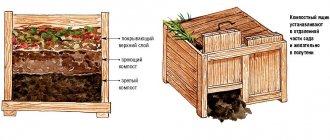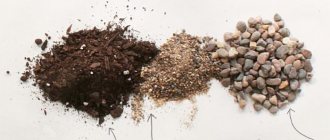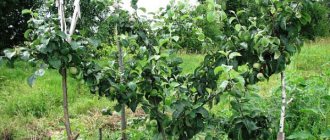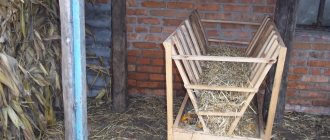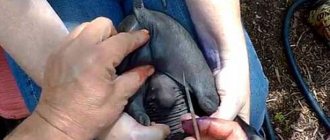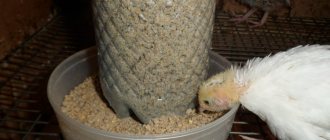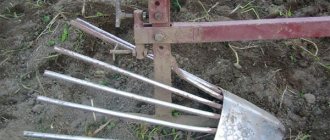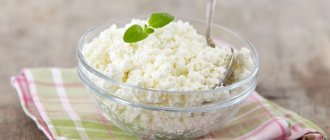Which tree bark is suitable for an orchid?
When choosing bark for planting, you need to understand what exactly you need to get from the material. It is used as a nutrient substrate. This means it should decompose well. Coniferous trees are best suited for this .
Spruce
Spruce raw materials are collected from mature trees. Spruce bark is well suited for preparing a substrate, as it is porous and decomposes fairly quickly.
larches
Larch feeds epiphytic orchids worse than spruce or pine . But it is also often used for growing orchids.
Pines
Pine raw materials are easiest to find in stores or assemble yourself. This is one of the most common trees. Usually it is used to prepare the substrate.
Other types
Some gardeners prefer to use oak bark , arguing that it contains more nutritional components than spruce or pine. In addition, it has less acidity.
But collecting oak bark yourself is problematic, since it does not peel off. And industrial harvesting is almost non-existent. Therefore, such material cannot be found in ready-made mixtures.
Raw materials from other coniferous trees (for example, cedar or thuja) are practically not used. The fact is that it decomposes slowly, which is why it releases nutrients poorly.
Homemade or store bought?
It is unlikely that it will be possible to answer this question unambiguously. Since some people believe that it is best to buy a ready-made substrate in the store, which will contain, in addition to the bark, other useful elements. Moreover, this way you can save time and effort.
And other gardeners give their vote in favor of self-prepared bark . This is explained by the fact that the gardener will be completely confident in the quality of the resulting product. Both options have the right to life. Everyone chooses based on their personal preferences.
The bark can be found in the park located near the house. If there are none, you can contact a city company that processes trees and ask them about the availability of bark.
If these two methods do not help, then you can take a country walk and collect bark in the forest.
We invite you to watch a video about what types of bark and substrate are offered in stores for growing orchids:
Ready mixes
There are quite a few ready-made substrates. Here are the most popular ones.
Seramis
In addition to the bark, it includes:
- fertilizers;
- clay;
- substrate moisture indicator.
This mixture is most often used in cases where the number of plants is too large, so it is difficult to control each one.
Bio effect
The composition contains only substances of organic origin. The main component is Angara pine .
The substrate is highly breathable.
Royal Mix
The mixture is based on calibrated bark that has undergone heat treatment in production. The substrate also includes:
- large peat;
- charcoal;
- coconut fiber.
Royal Mix has a high content of zinc, iron and magnesium.
How to prepare it yourself: step-by-step instructions
Let's take a closer look at how to prepare bark with your own hands at home, pine or other trees whose bark is suitable for the plant.
Required Tools
To harvest bark yourself, you need to acquire the following equipment::
- knife-jamb (experienced flower growers advise taking two knives with you at once: one with a short handle, the other with a long handle);
- wooden spatula with blunt edges;
- rope for tying bark.
The process of collecting material and some recommendations for its selection
- The bark should not have any dark spots or charred areas.
- Preference should be given to the driest material.
- To tear the bark off the trunk, you must start at the top.
- Before you go home with the preparations, you need to give them a good shake to get rid of all the insects present.
Pieces of wood should not be preserved in the bark . They must be removed before planting.
Grinding of particles
Grinding bark particles is mandatory when preparing bark. Let's look at what fraction of pine or other tree bark is needed, and how to properly process it for planting an orchid.
- Lightly clean the inner layer of the workpiece.
- Cut the bark into pieces using pruning shears.
- Then, when the top layer becomes easy to remove, you need to get rid of it. You will also need to inspect the workpiece for the presence of rotten particles and, if any, remove them.
- Examine the bark and look for areas affected by insects. You also need to get rid of such elements.
- Grind the bark again so that you get pieces with sides of two centimeters. And it doesn’t matter how even these elements are. This will not affect the quality of the substrate in any way.
Digestion
Simply put, this is boiling to remove unnecessary elements. Let's figure out how to properly organize this process, and how long you need to cook the bark of a pine or other tree. To carry out this procedure, you need to prepare a galvanized bucket in advance.
Instructions:
- Place the raw materials at the bottom of the container and fill with water.
- During boiling, the bark always floats. This shouldn't happen. Therefore, the workpiece must be pressed down with something heavy.
- After the water boils, you need to wait another hour.
- After the specified time has passed, stop boiling and allow the bark to cool.
- The water must be drained through a colander. The raw material should remain there until all the liquid has drained.
Drying
- This must be done exclusively in natural conditions.
- The workpiece is laid out on a dry surface and allowed to dry for 3-4 weeks.
- After the specified time, break the bark and check if it is dry inside. If everything is dry there, then let the material lie there for another 24 hours.
The most optimal conditions for storing bark are in a plastic bag, which should not be tightly closed to ensure good air circulation.
Obtaining a complex substrate
To obtain the substrate you will need the following components:
- sphagnum moss;
- peat;
- charcoal.
All components are taken in equal parts and mixed. This way you will get a perfectly suitable soil mixture (read more about how to choose the right soil composition with your own hands here). Before placing soil in a flowerpot, do not forget about the drainage layer (for more details on whether an orchid needs drainage, read this material).
Material collection process
You can collect material in pine forests, forest parks or ordinary parks where there are coniferous trees. You can also ask for it at the sawmill.
When procuring raw materials, you must use the following recommendations:
- You cannot take bark from living trees, as it will contain a large amount of resins that are harmful to the orchid.
- Material is harvested from sawed, fallen or dead trees.
- Before separating the bark, you should make sure that it is not rotten or affected by fungus. You should also pay attention to the presence of insects. Dry trees are often inhabited by borers and bark beetles. This material is not suitable for the substrate. An orchid requires high quality raw materials, without growths, rot and stains.
- A long, sharp knife is used to separate the bark. It is cut through to the wood and then removed from the trunk. You can also use an axe.
- Harvesting is carried out in dry and sunny weather.
Preparing bark for substrate
Before processing begins, the material is checked . It is necessary to discard those pieces of bark from which cannot be removed:
- spots;
- rotten parts;
- hardened resin.
Store raw materials in a dry, warm and well-ventilated place where there are no rodents. Under such conditions, the bark can be stored indefinitely.
Shredding pieces
Large and thick pieces are crushed using an ax. Thin bark is cut with pruning shears. You should get fractions measuring 0.5-1 cm.
Soaking and cooking
The material is disinfected by conventional boiling in water . Cook for 4-5 hours. The water needs to be changed every hour.
In some cases, the raw materials are soaked in an insecticide solution. This helps destroy all parasites.
Calcination
After cooking, the bark is left to dry for 2 days. Then it is placed in the oven. Calcinate for 40 minutes at a temperature of about 80 degrees. This procedure destroys parasite larvae.
Care after transplant
After transplanting the orchid, it is necessary to create favorable conditions so that it takes root in the updated substrate as soon as possible. Illumination, humidity, and temperature conditions are important for it.
It is not recommended to feed the plant within a month after the relocation procedure.
Watering and humidity
If the preparatory stage took more than 2 hours, then the orchid can be watered immediately after relocation, so the roots will retain the required level of moisture. If the preparation was faster, then the first watering should be done after 3-4 days, depending on the air humidity in the room.
The process of watering an orchid is different from that of ordinary indoor plants. The substrate should be sufficiently saturated with moisture, and for this it is best to place the flower pot in a container with warm water and let it sit for about 15 minutes. However, after this the water must be drained completely. Constant excess moisture leads to rotting of the roots.
Immersing orchid pots in water is the best way to water.
You need to use purified water, this will help maintain the normal acidity level of the substrate - 5.5–6.5 pH.
The orchid requires a fairly high level of air humidity (60–90%). If the air in the room is dry, then spray it periodically with a spray bottle. This procedure also helps to slightly moisten the soil and refreshes the plant.
Spraying with water refreshes and hydrates the plant between waterings
In this case, you need to ensure that water does not accumulate in the axils of the leaves. This will lead to rotting and the occurrence of fungal diseases.
Excess moisture causes leaf base to rot
Installing humidifiers in the room where the orchid is located will help solve the problem of excessive dry air. In addition, you can use more affordable means: for example, hanging wet woven materials on heating radiators.
Temperature and lighting
Large temperature changes are harmful for the normal functioning of orchids. The maximum daily change in air temperature in the room where the flowers are located should not exceed 5–7 degrees. Orchids love warmth, but not heat: a comfortable temperature for them is from +20 to +25°C. Cold temperatures down to +12…+15°C threaten the plant with hypothermia.
It is better to keep orchids in well-lit rooms, but direct sunlight should be excluded. The ideal location for the flower would be on windows facing east . In hot summer time, it would be useful to protect the plant from direct rays of the sun by darkening the windows with paper, foil or a light cloth. Blinds will also cope with this task perfectly.
You can regulate the intensity of sunlight using blinds
How to use the resulting mixture for planting?
- You need to take a disinfected pot and place a 2 cm drainage layer in it.
- A layer of prepared substrate is poured on top and the plant is placed on it.
- After this, more soil is added. The base of the epiphytic plant should be located 1-2 cm below the edge of the pot.
Bark is a necessary component for creating a nutrient substrate for orchids. In such soil the plant will be healthy and beautiful. It is important to know how to process and prepare raw materials for subsequent use as soil.
Problems and difficulties
- Most often, difficulties arise after landing.
The most common problem is root rotting due to excess moisture. - Yellow spots may appear on the leaves if the flower is exposed to sunlight. It is better to place it on the east side.
- If the pot is not treated before planting, the orchid may slow down its growth and flowering.
For an orchid, the bark is an important element . The soil prepared using this material is filled with nutrients that allow better water retention and active growth. You just need to choose the right raw materials and provide the flower with good care.
